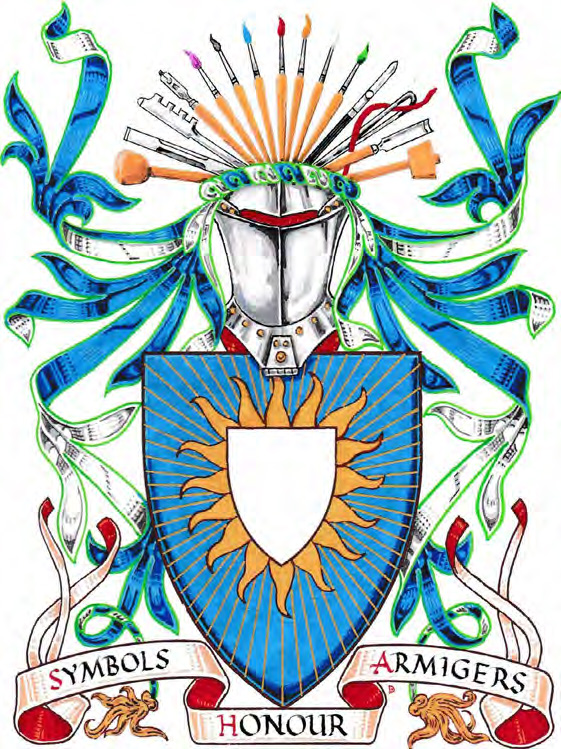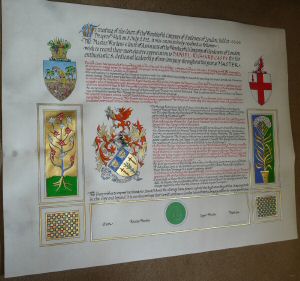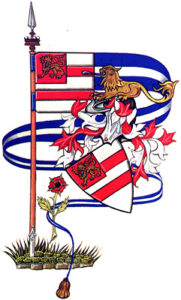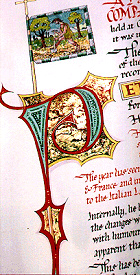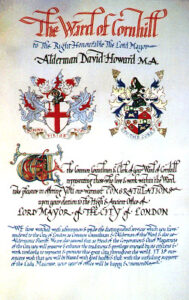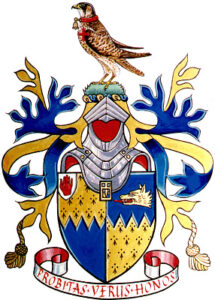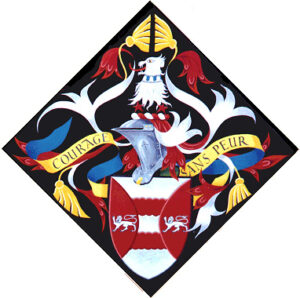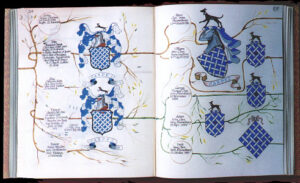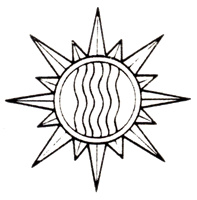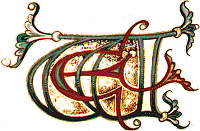† JOHN LANCASTER, FSHA — Calligrapher and Heraldic Artist
John was trained as a calligrapher, illuminator & heraldic artist at Leeds College of Art under the tutorship of Thomas Swindlehurst ARCA, in the traditions set by Edward Johnston and medieval artists. He studied for the National Diploma in Design (NDD); gained higher degrees at London University (MPhil & PhD) and was awarded the Fellowship of the NSEAD. He was also a member of the Heraldry Society.
He undertook commissions for private individuals, churches, colleges, corporate institutions, borough councils, and livery companies. He was a Freeman of the City of London and a Liveryman of the Worshipful Company of Gardeners for whom he acted as scribe and heraldic artist in designing presentation scrolls & freedom certificates, while also being responsible for the Company’s Golden Book, an historic archive in which he inscribed the names of distinguished guests attending Company banquets and functions.
Many of his heraldic scrolls have been presented in civic ceremonies in the UK, USA, Russia, China, Africa, and France. Other work has gone to the USA, Australia, Belgium, France and Mexico. His work is in collections across the world. He taught undergraduate and post-graduate students in art colleges and universities in Oldham, Doncaster, Leicester, Gloucestershire & Bristol (Head of Department). As a visiting professor he lectured widely in the USA — where he also directed a number of summer schools. In 1991 he was invited to Arizona by the Gila Valley Arts Council as its Visiting Artist, where he gave demonstrations, lectures, and classes in schools, universities, adult centres, a federal prison, and on the Apache Indian Reservation at Fort Thomas. Towards the end of this visit he mounted a Solo Exhibition of his work in the town of Thatcher. He was also a guest speaker at a large art convention in New York.
John had a number of solo exhibitions in the UK in London, Leicester, Keele, Stowe, Cheltenham, and Bristol, and in the USA in Decatur (Alabama), Columbus (Ohio), and Arizona. A number of his books on Lettering and Calligraphy for both adults and children have been published by leading companies. Under the auspices of the British Council, he visited universities, art colleges, teachers’ centres, and schools in Africa and Norway as a guest lecturer, teacher and adviser.
He was fortunate in having an ancestry that embraced heraldry from its beginnings in the mid-12th century when Sir William de Tayleboyse — the 5th Norman baron of Kendal by direct descent — took the name de Lonecastre as Governor of Lancaster Castle. His arms were very simple — Argent two bars Gules — with the Lion of England added as an augmentation of honour in a quarter of the shield very shortly afterwards. Lancaster barons and knights fought at the Siege of Caerlaverock, the Siege of Calais and other battles and their banners must have been borne with immense pride. John was delighted that the arms he himself bore were derived from such distinguished origins, and he brought the same pride to bear in his own heraldic work.
In his later years, John occasionally taught practical calligraphy and heraldry workshops.
